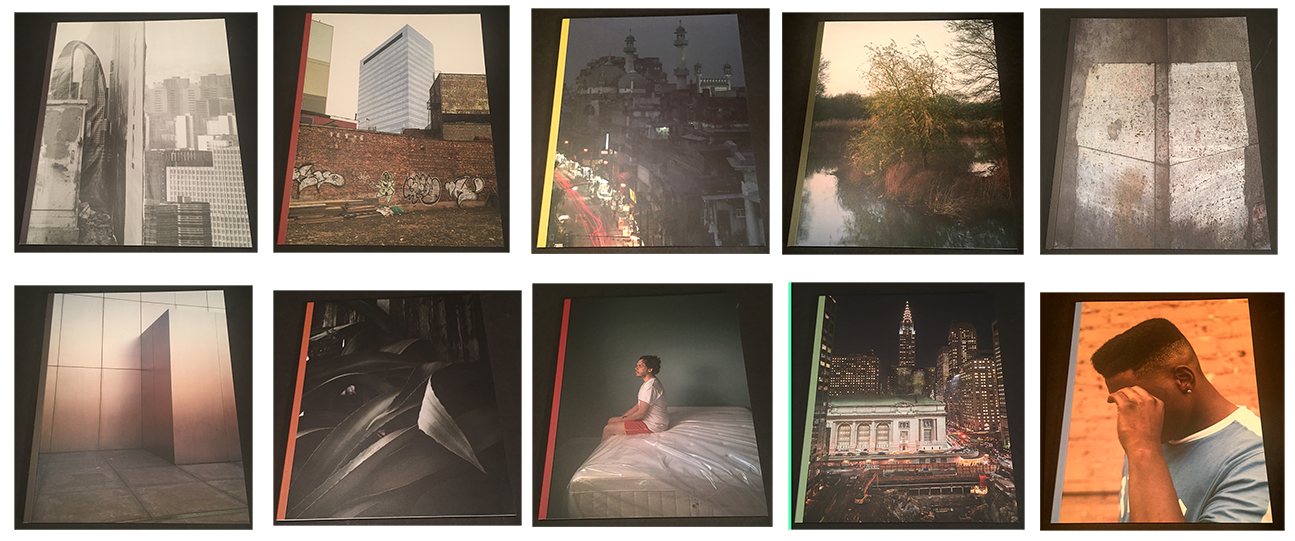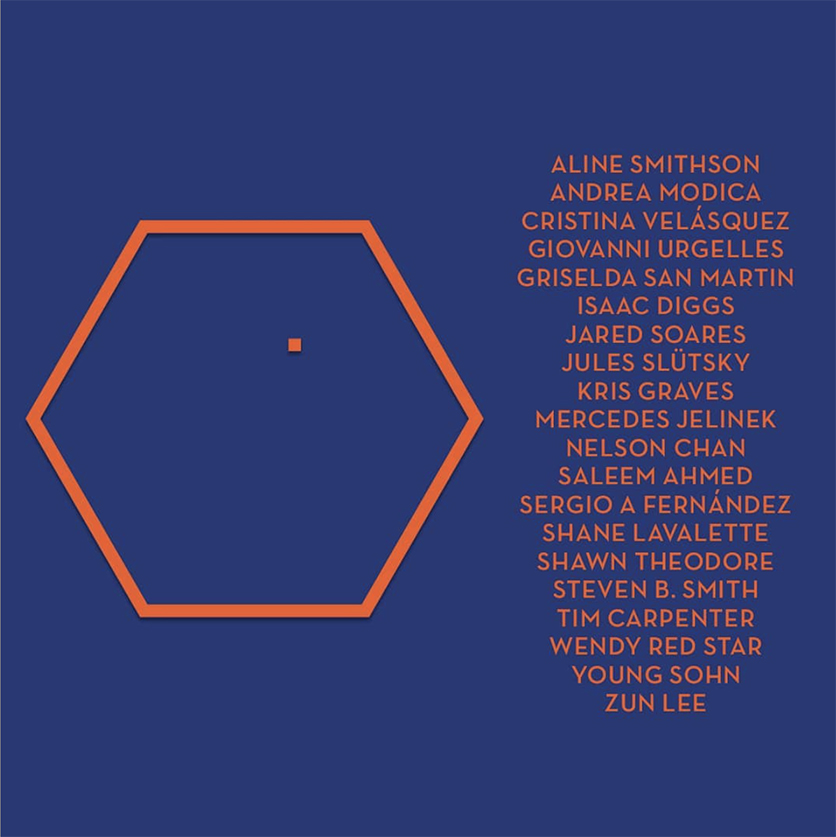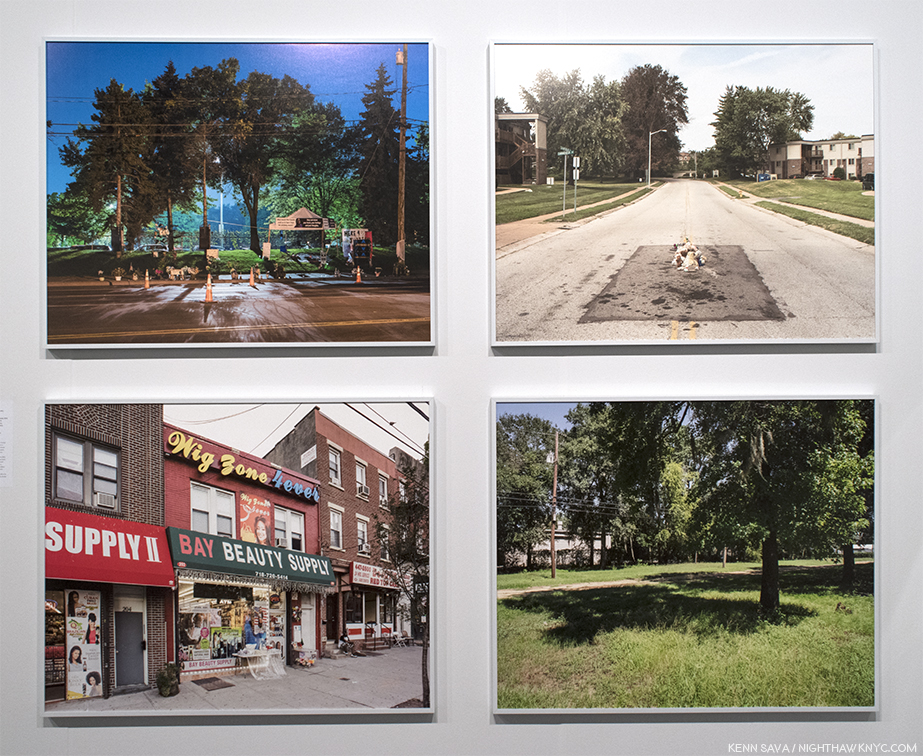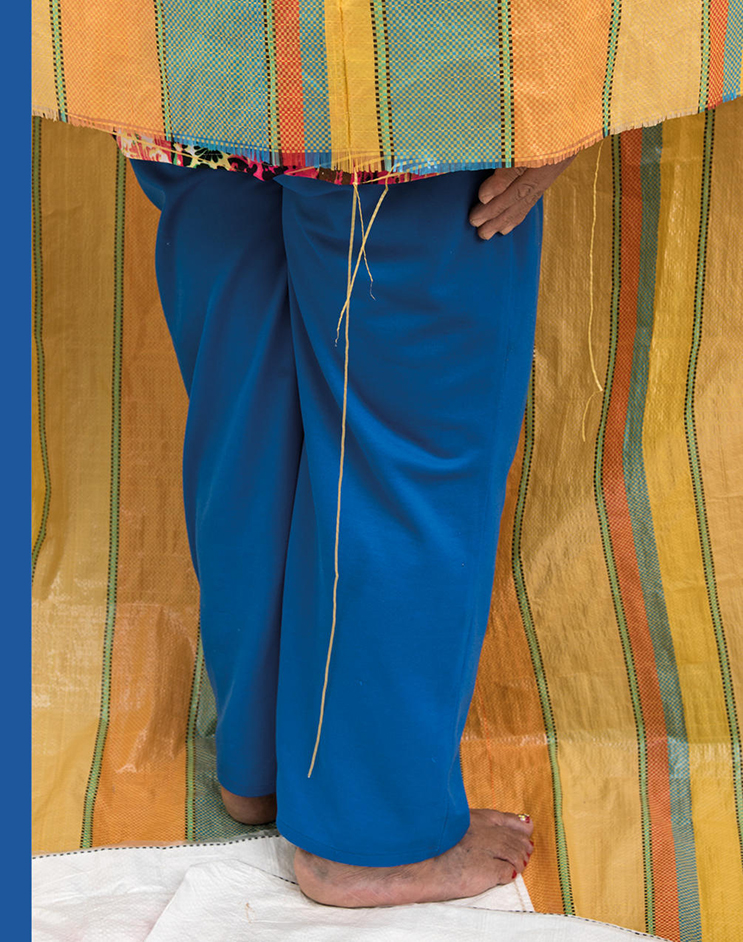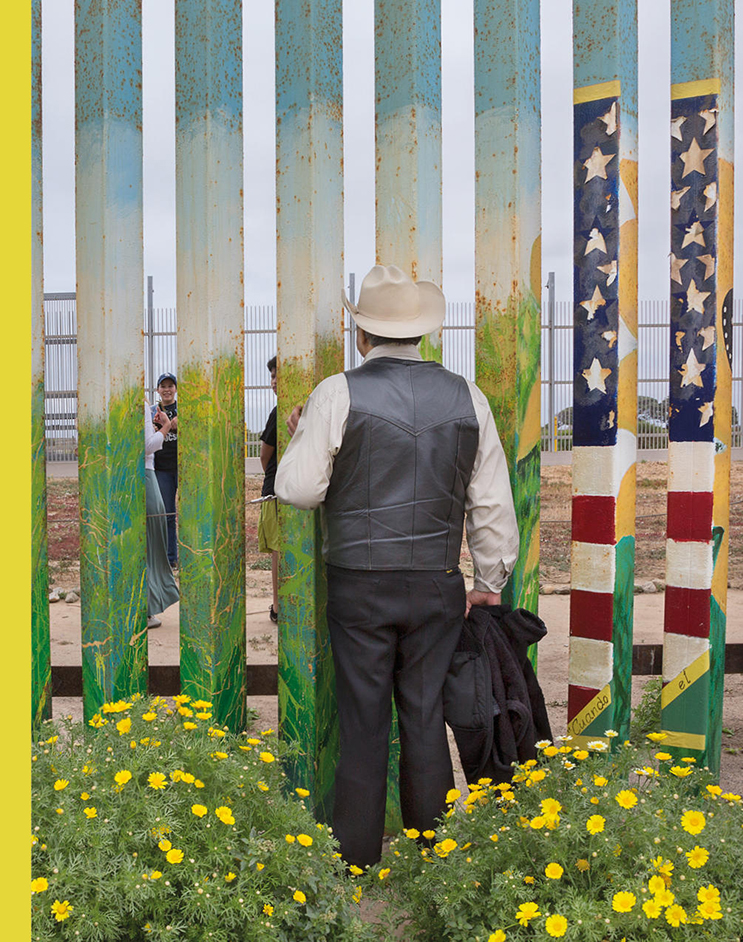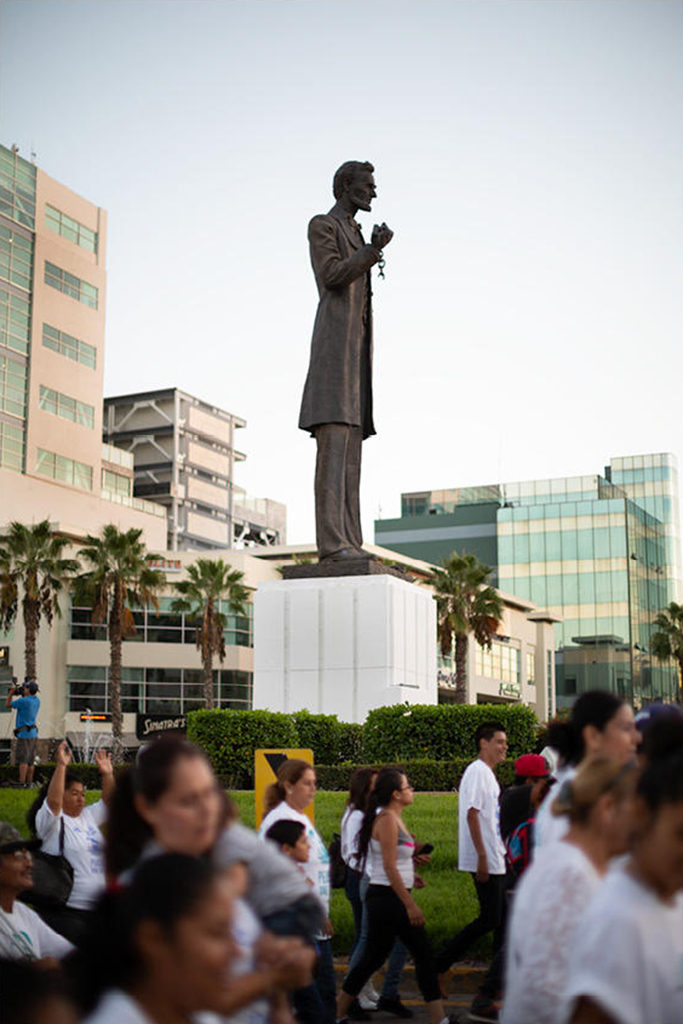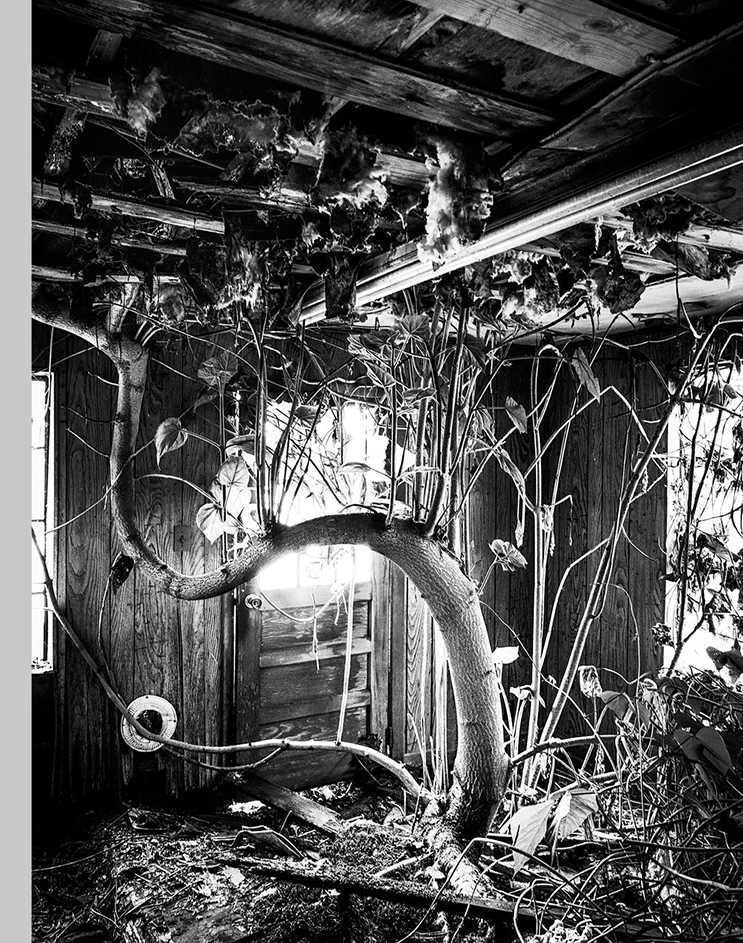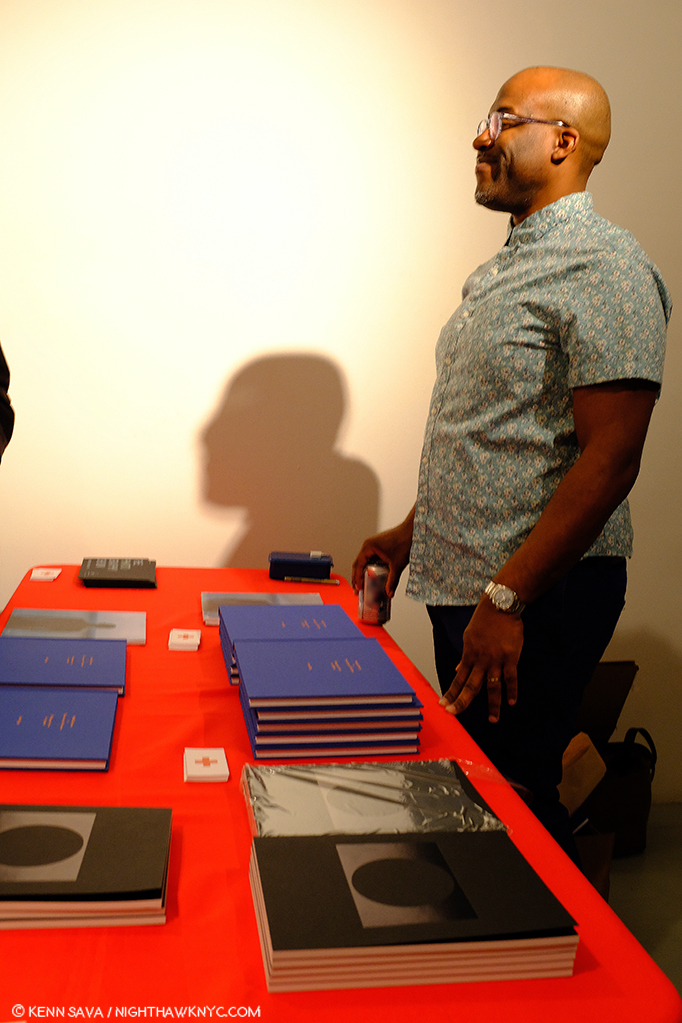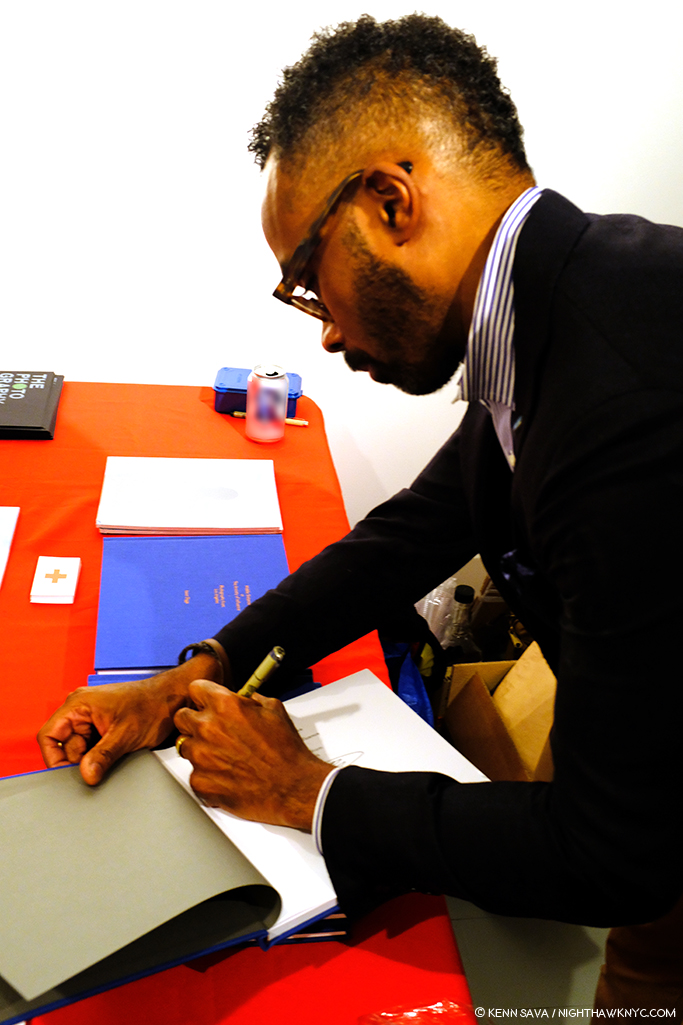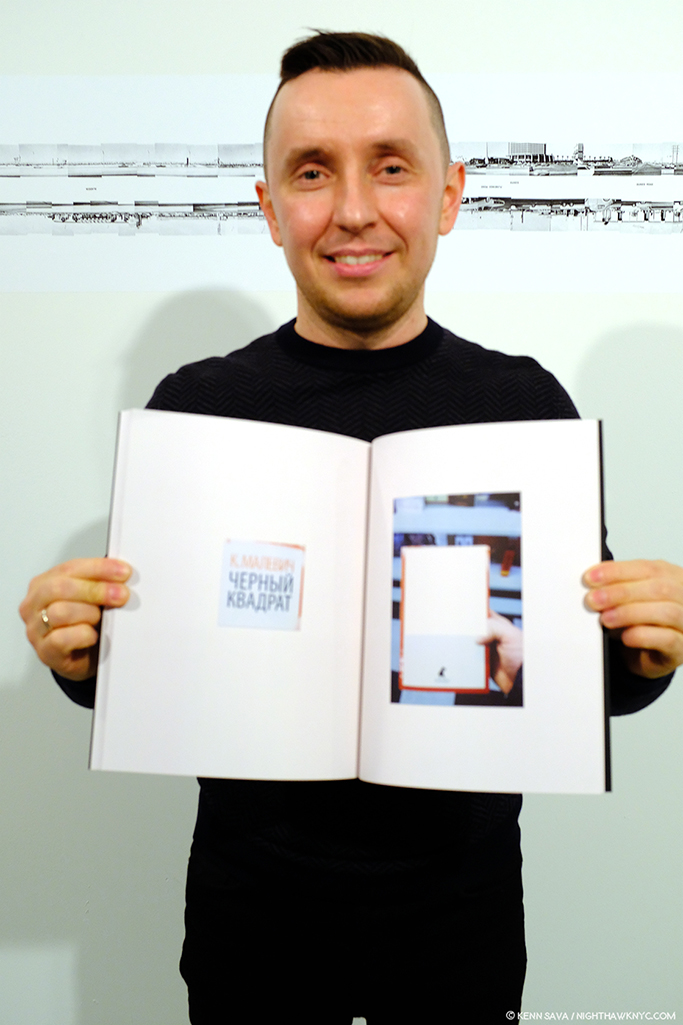Written by Kenn Sava. Photos by Kenn Sava & Kris Graves Projects
Kris Graves, and his publishing company, Kris Graves Projects (+KGP), shocked many in the Photography and PhotoBook world when he released the ten-volume set, LOST, almost exactly a year ago. The shock at its size quickly turned to admiration once the quality of the individual books it included set in. I was as impressed by the overall vision that unified the project across those 10 books as I was the work of each of the 10 Photographers it included. Alphabetically by city, LOST consisted of-
–Beijing by Lois Conner
–Berlin by Andreas Gehrke
–Boston by Michael Cardinali
–Calcutta by Laura McPhee
–Chicago by Owen Conway
–Long Island City by Kris Graves
–New York by Lynn Saville
–Omaha by Zora J Murff
–San Francisco by Luke Abiol
-and Seattle by Joseph P. Traina
Then, there was the daring of a company that’s not yet one of the “big names” in the PhotoBook world (let alone possessing their resources) the set represented. That +KGP marshalled the wherewithal to pull off such a set was equally stunning. LOST made my NoteWorthy PhotoBooks of 2018 list, and probably some others, for all of these reasons. As memorable as it was and remains, even it didn’t prepare me for the news that Kris Graves Projects was about to release LOST II- consisting of TWENTY VOLUMES! Shaking my head in wonder, this time I was determined to find out- “HOW do they do it?”
I reached out to some of the Artists involved, and I visited Kris Graves at his Long Island City studio, where I found him hard at work putting the finishing touches on the set that he was about to send off to Spain to be printed, under the watchful eyes of +KGP team member, Pablo Lerma.
As a result, this piece marks the first time I’m writing about books I haven’t physically seen. Even without having books in hand, from everything I have seen thus far, it’s apparent to me that LOST II is going to be nothing short of monumental, in ways beyond its 7 1/2 pound size (for the full set in its heavy duty slipcase). For one thing, it’s already apparent that, it’s different from LOST, and that’s as it should be. After all, LOST already stands on its own- why repeat it? This time, it seems less about the place, per se, and more directly involved in what it’s like for the people who actually live in it. Tough no place is revisited, the basic premise remains- Each of the, now twenty, Photographers contributes a book of Photographs taken in one city around the world. LOST II will include-
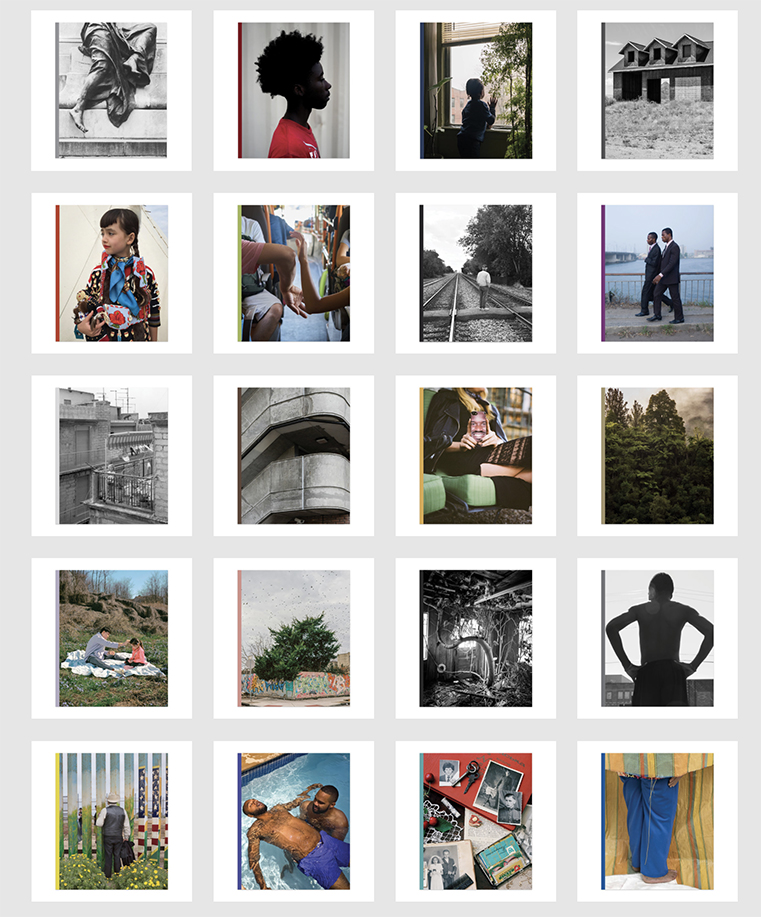
The covers of LOST II. Top row, from left-Washington DC, Birmingham, The Bronx, Colorado City. Row 2- Crow Country, Hong Kong, Illinois Central, Lagos. Row 3- Lentini, London, Los Angeles, New Zealand. Row 4- Ossining, Philadelphia, Spruce Pine, Syracuse. Row 5- Tijuana, Toronto, Uzhhorod, and Viterbo
A link to a preview of each book is included in the list, below-
–Birmingham by Shawn Theodore
–The Bronx by Kris Graves
–Colorado City by Steven B. Smith
–Crow Country by Wendy Red Star
–Hong Kong by Nelson Chan
–Illinois Central by Tim Carpenter
–Lagos by Isaac Diggs
–Lentini by Andrea Modica
–London by Sergio A. Fernandez
–Los Angeles by Aline Smithson
–New Zealand by Young Sohn
–Ossining by Giovanni Urgelles
–Philadelphia by Saleem Ahmed
–Spruce Pine by Mercedes Jelinek
–Syracuse by Shane Lavalette
–Tijuana by Griselda San Martin
–Toronto by Zun Lee
–Uzhhorod by Jules Slutsky
–Viterbo by Cristina Velasquez
–Washington DC by Jared Soares
Even though LOST II is BIG, I can feel the world getting smaller. I’ll explain. First a quick recap by way of providing some background for those wondering what it’s all about…
Kris Graves and his work were introduced to me when I came across four of his Photographs in the All Power: Legacies of the Black Panther Party Exhibition, memorably curated by Michelle Dunn Marsh at The Photography Show (AIPAD) in April, 2018. The work, a series taken at the locations where young black men were murdered by police (since published in his book, A Bleak Reality,+KGP, 2018), stopped me cold. Enquiring at the show’s info desk I discovered that Mr. Graves was ALSO a publisher AND he had a table in the book section.
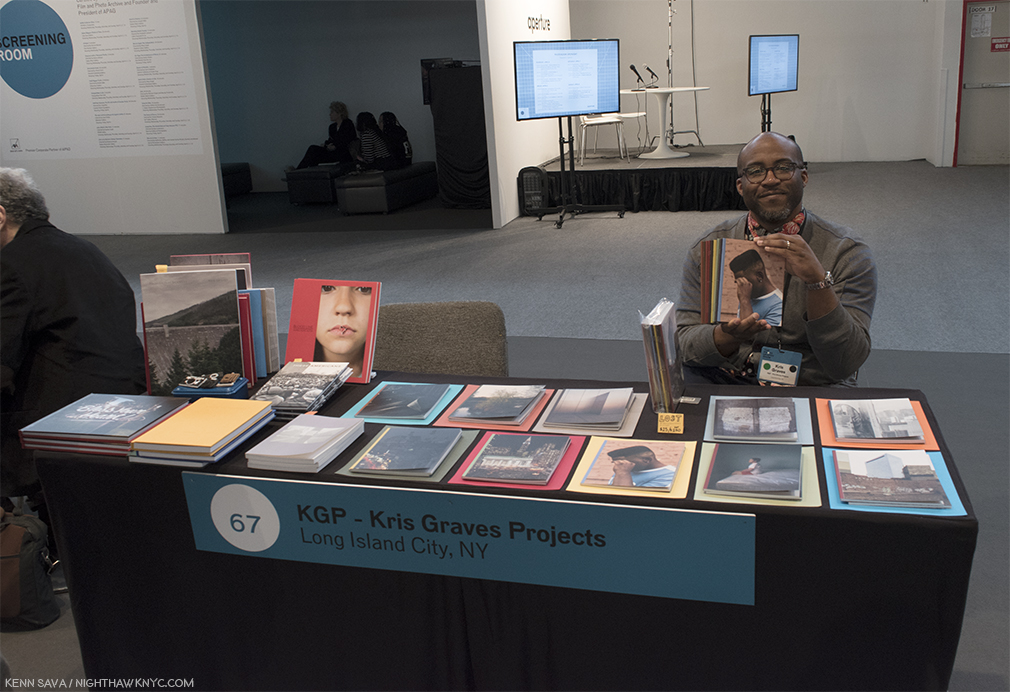
Kris Graves holds a set of LOST, with its individual component volumes displayed in front of him, at the Kris Graves Project table at AIPAD, April, 2018.
Walking over, indeed, there he was. After “Hellos,” I saw the newly announced 10 volumes of his then latest project, LOST, displayed in front of him. Perusing them, as accomplished as his Photography is, I was equally shocked to discover the quality of the books he published. I subsequently wrote about the experience here. One year into following both his own work and the books +KGP has produced my respect and admiration has continued to grow. I went to the LOST book release party shortly after AIPAD, where I met some of the Artists included in the series and bought my own set. LOST quickly sold out and is now something of an Urban PhotoBook Legend given how often I hear it referred to.
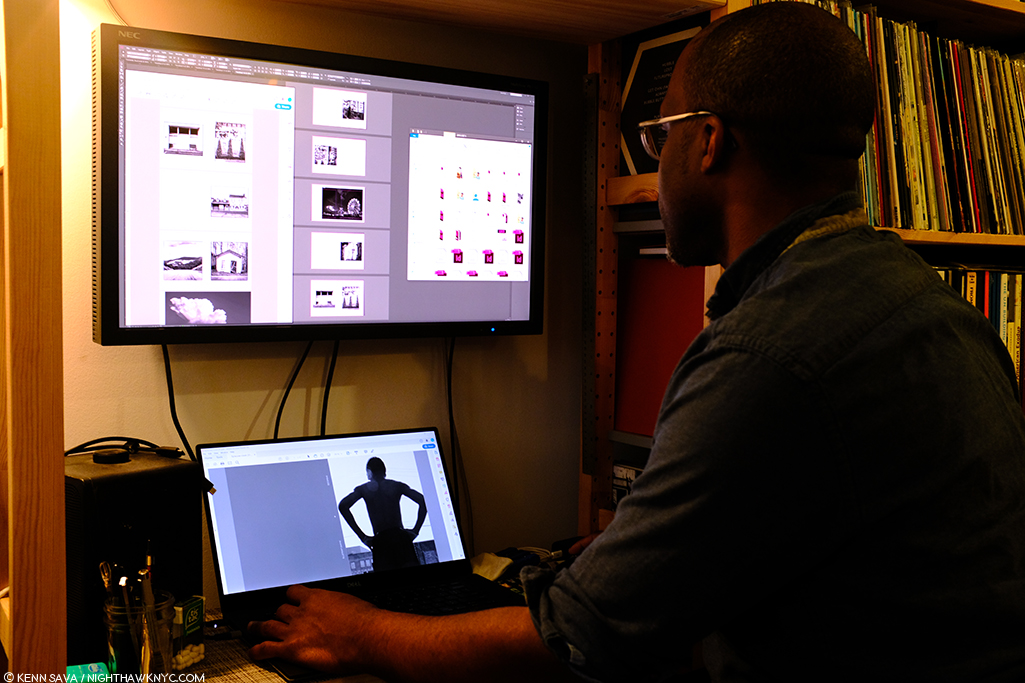
Kris Graves hard at work while talking (and selecting tasty vinyl from his impressive Lp collection), finishing up LOST II before sending it off to be printed in Spain on February 13, 2019.
Curious about how these bodies of work came about, I asked Kris if they were work that the Artists coincidentally happened to have on hand, or if any created them based on discussions with him for LOST II? He said, “I have interest in cities in general and I am always interested in seeing a new place through a strong artist’s point of view. Many of the chosen artists call a few places home, and they had the freedom to show me any work they felt made a good series. Some artists made new work for the project, which is flattering. Most artists have been working on these series’ for a long time, even decades. All of the artists have had the freedom to create these projects. I help with some sequencing suggestions and layout. These are editioned art pieces.” On LOST II’s roster, he added, “…this list of artists is stellar and I am humbled that they trusted me and the project. I’m still in the heart of it and can’t choose a project over another. I can say that Steven B. Smith’s project Colorado City is going to raise some eyebrows and Andrea Modica’s Lentini and the 8 x 10″ view camera work within makes me with these books could be larger in size. And to keep it ultra-real, I keep the project Purchase College strong with the monographs Ossining by Giovanni Urgelles, Uzhhorod by Jules Slutsky, and Spruce Pine by Mercedes Jelinek. I can’t wait for you to see these, I am excited to even talk about them.”
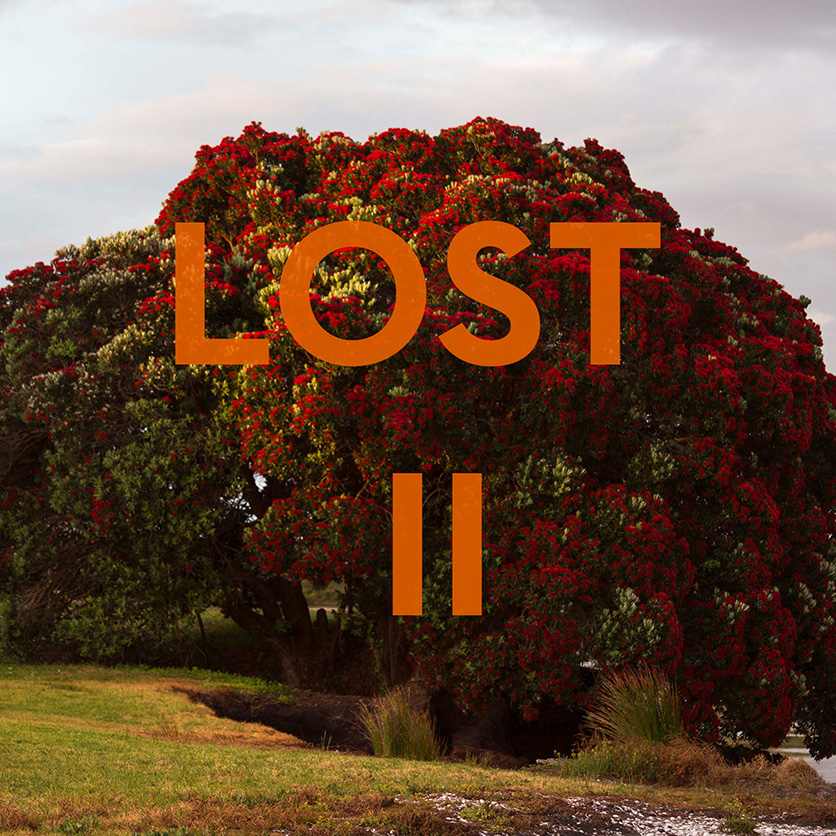
A lovely, early, +KGP promo image for LOST II, now lost, itself. I think it fell into that sink hole in front of the tree.
When I last spoke to Kris about it this past fall, LOST II consisted of nine books with an open call being held to choose an Artist for slot 10. I asked him how the project grew from 10 to 20 books. “I decided sleep wasn’t important. I wanted to cover more ground and also realized that I had more than ten artists in mind that I wanted to work with immediately. Twenty unique projects means we get to cover more of the world.” That made me wonder about the “secret sauce” he uses to determine exactly who and where is going to be in LOST II. So, I asked him- As the publisher, and creative lead on these projects- Do you start with a “hit list” of places you’d like to include, is it more based on available bodies of work by Artists you’d like to include, or a serendipitous mix of the two? He said, “It is a mix of the two but never evenly. I have some talented colleagues and I simply ask people if they wanted to take part. A few got at me to show me work in the last year, and we’ve worked together to make the projects.”
This has led to one of the things that made LOST memorable and special- its blend of well known and not as well known Artists seamlessly side by side. It’s a testament to LOST, and Kris, that LOST II is something Artists want to be a part of. I learned that no less than 150 submitted portfolios for that open call for that final slot in LOST II! Cristina Velasquez was chosen (by Hamidah Glasgow, Director of the Center for Fine Art Photography, Fort Collins, Mr. Graves pointed out to me), and her book, Viterbo, will leave no doubt why. I reached out to Cristina to congratulate her, and ask about its creation. She said, “Viterbo is a town in the mountains of Colombia where my family and I spent most of our childhood. It is also a generous, infinite studio, where I am able to compose freely and make pictures of the things that I care about, the real and the imagined. By referencing this location, my aim is not to indicate the origin of the pictures or to represent the place in any way. This book is a tribute to its people and to the everyday struggles of working-class families that resist and find joy in the midst of informality and precarious forms of labor. It is also a love letter to my childhood days and memories from Viterbo —the streets, the mountains, the stories—. Their imprint will forever infuse my artwork and the way I experience the world with a sense of dignity, absurdity, and joyous colour.”
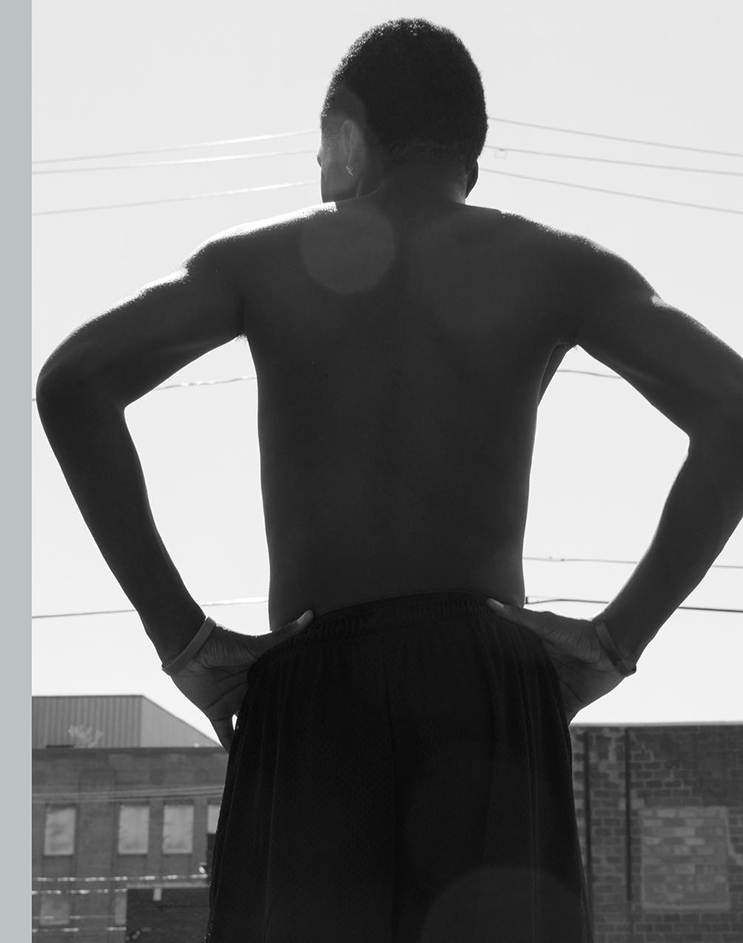
“In Syracuse, New York, Interstate 81 separates those who live on the right side of town from those who do not,” per Arthur Flowers in TOPIC. Shane Lavelette’s, Syracuse, who’s cover is seen here, looks at the lives effected.
Among those joining Ms. Velasquez, is Shane Lavelette, the Director of the non-profit, Light Work, one of the country’s most respected Photo organizations, and an accomplished Photographer in his own right, who contributes the haunting Syracuse, his first book solely in black & white. I asked Mr. Lavelette how this body of work came to be, and came to be part of LOST II. He said Syracuse “began as an editorial piece for TOPIC (which can be read here). Since then, the spring of 2017, I’ve continued photographing for this body of work, as the issues/conversation around the highway develops. Essentially, the project explores the ways in which decisions of urban planning can connect or divide communities and the voices that are represented or lost in the process. Kris asked me to be a part of LOST II and I was originally exploring another idea for the publication but returned to this work because I think there’s an urgency to this story. I’m working with him to produce some extra copies of the book, which can be distributed for free to the local community. I don’t believe my own view/voice is very important in this work, but the project is one way to try to use an artistic project as an agent for dialogue in various contexts.”
He’s being modest. Syracuse, is stunningly beautiful and poetic, and is sure to impact all who see it. While this is an issue looming large in Syracuse right now, the bigger question it asks is- In how many other places is this same thing going on?
In that sense, it presents what seems to me to be one of the “themes” of LOST II as a set- revealing national, even, global issues in 2019 from a local perspective, consciously or subconsciously, as also witnessed in Crow Country by Wendy Red Star, Birmingham, by Shawn Theodore or Uzhhorod by Jules Slutsky. Perhaps, nowhere else in the set, is this more apparent than in Tijuana by Griselda San Martin.
Griselda San Martin is a Spanish Documentary Photographer who’s work in Tijuana seems to encapsulate a number of the series she has been working on, each of which a part of her mission statement- “My goal is to represent the immigration issue in all of its complexity, addressing the social, political and economic factors that motivate individuals to leave their homes. I hope to create images that stimulate dialogue and reflection1.” Her work is often up close and personal, yet, she’s equally adroit at stepping back to show the bigger picture. All of this is beautifully rendered in Tijuana, where her twin gifts with color and light are apparent in every image. The documentary elements, as seen on the cover, are powerful and poignant, but the book contains a variety of styles, some more commonly seen in Fine Art Photography, showing off the range of her talent, while keeping Tijuana fresh.
About Tijuana, she said- “Contrary to what we are shown in mainstream media, Tijuana is a fascinating place,” she said. “All we hear right now about Tijuana has something to do with the several migrant caravans and Central American immigrants who have arrived in the city during the past few months. My book has nothing to do with that. All the images were taken before the first caravan arrived. The first time I was in Tijuana was during my graduate studies at the school of journalism at the University of Colorado Boulder. My graduation project led me to this border city, where I was captivated by its culture and dynamics, and the complexities (and contradictions) of the border region. For the past six years, I have been going back for different periods of time, working on several projects. Perhaps the most successful one has been The Wall, a photography and video project that documents families separated by their immigration status, who gather at Friendship Park, the only federally established binational meeting place (currently closed). Through photographs and a short documentary film, the project examines the concept and relevance of a border wall, border security, and the effects of immigration policies on individuals and families affected by them, during a time of rising xenophobic political tensions. I also documented the small but growing Muslim community in the border region.” How did it become part of LOST II? “I met Kris Graves a couple of years ago. We were part of a group exhibition at CPW (Center for Photography at Woodstock). He contacted me directly to invite me to be part of Lost II.”
Along with all of this, many of the books are also equally personal.
Take Hong Kong, where Photographer, TIS Books co-founder/co-publisher, and Aperture Foundation staff member, Nelson Chan, has spent quite a bit of his life. “The book came to be quite naturally,” he said. “I grew up in Hong Kong and live there during various parts of the year while I’m overseas printing books for the Aperture Foundation. A lot of the images were made during these travels. Kris knew I photographed in Hong Kong quite a lot and simply asked me if I wanted to take part in his project. I was emphatic about it from the start. One of the things that I did with this book that was a bit unexpected for me was that I actually combine some black and white negatives from some of the very first photos I ever took. Not just in Hong Kong, but as a young budding photographer. You see, the city was what sparked that interest in putting a camera to my eye.” Joining Nelson is his TIS Books partner, Tim Carpenter, who contributes Illinois Central to LOST II. (By the way, TIS Books also made my NoteWorthy PhotoBooks of 2018 list with El Libro Supremo De La Suerte, by Rose Marie Cromwell.)
Then there is Spruce Pine by Mercedes Jelinek, which offers an almost meditative approach, sans people, which, I believe, may be the only book in the set to do so. It’s her eagerly awaited second book after her sold out debut, the powerful, These Americans, (+KGP, 2018). Though its meditative quiet couldn’t be more different in tone from the raucous These Americans, revealing another side of her range, it retains the depth of feeling, even without human subjects. I asked Mercedes how Spruce Pine came to be, and came to be part of LOST II. “I was a resident artist at Penland School of Craft in Penland NC (right next to Spruce Pine),” she said. “Over the three years I lived there, I would go out and explore the area – going down back roads and side roads until I would reach a dead end. I realized I seemed to gravitate towards photographing quiet scenes – something I don’t usually have where I’m from in NYC. Not necessarily boring or mundane scenes but more of absence- and I was attracted to it in the photos… If that makes sense. Over time it grew into a project. Kris Graves Projects published my first book. When I returned to NY, I showed Kris my Spruce Pine images and he invited me to be part of Lost II.”
On February 22nd, +KGP held a book release & signing for their three newest releases- Isaac Diggs’ Middle Distance, Mikhail Mishin’s Endless Bridge, and Rana Young’s The Rug’s Typography, with the first two Artists in attendance.
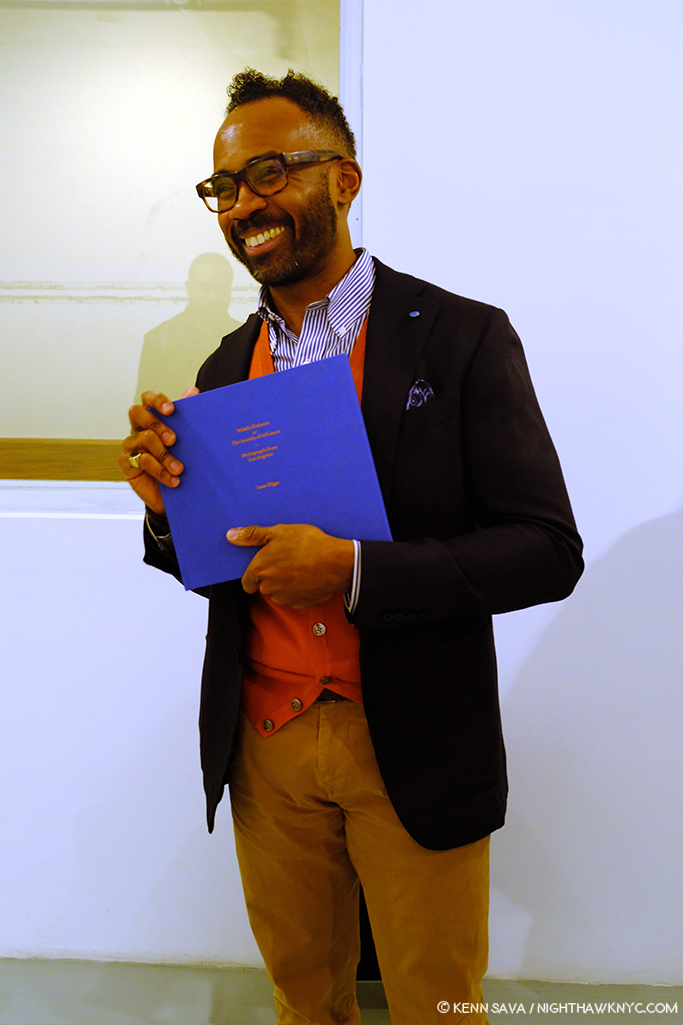
Photographer & educator Isaac Diggs introduces his brand new PhotoBook, Middle Distance on February 22nd. He should be smiling- It’s very good. His Photographs of Los Angeles, “conjure the underlying tension I sense in much of the American urban landscape,” he says on the +KGP site.
I took the opportunity to meet Isaac Diggs, the well-known Photographer and educator at NYC’s School of Visual Arts the past 19 years, and speak to him about how his book, Lagos, in LOST II, came about. He told me that he’s made a dozen trips to Nigeria, his wife’s homeland, since the mid-1990s, with the book consisting of work created during the last half dozen trips. The focus throughout is on the daily lives of its subjects through unexpected glimpses into them. It’s a book that reveals a diversity of lives being lived in views at once close up, and again expansive, in a city that few in this country are familiar with.
I also perused Middle Distance, which is as exceedingly well done Photographically as it is well produced, again with images taken over time, this time in California. Thinking about it and Lagos, I see the same eye in both books-it’s an eye that works very quickly and very quietly. In photo after photo images are captured while the subject, who’s often close by, does not even appear to know there’s a camera pointed at them which captures them spontaneously, while the background and the entire composition has a carefully considered feel. Mr. Diggs also has a talent for interesting/unusal fleeting moment. Not the “waited for moment” we see wonderfully in the work of, say, Harry Gruyaert or Alex Webb, Mr. Diggs’ moments feel like they required a fast shutter speed to capture, though it was probably his quick mind.
Sharing the book release with Mr. Diggs was Mikhail Mishin, who told me his new book, Endless Bridge, began by culling through his scrapbooks. Looking through it, I then asked him if Kazimir Malevich was an influence. He smiled, and then responded with this photo-op, which could have been a page right out of his book!
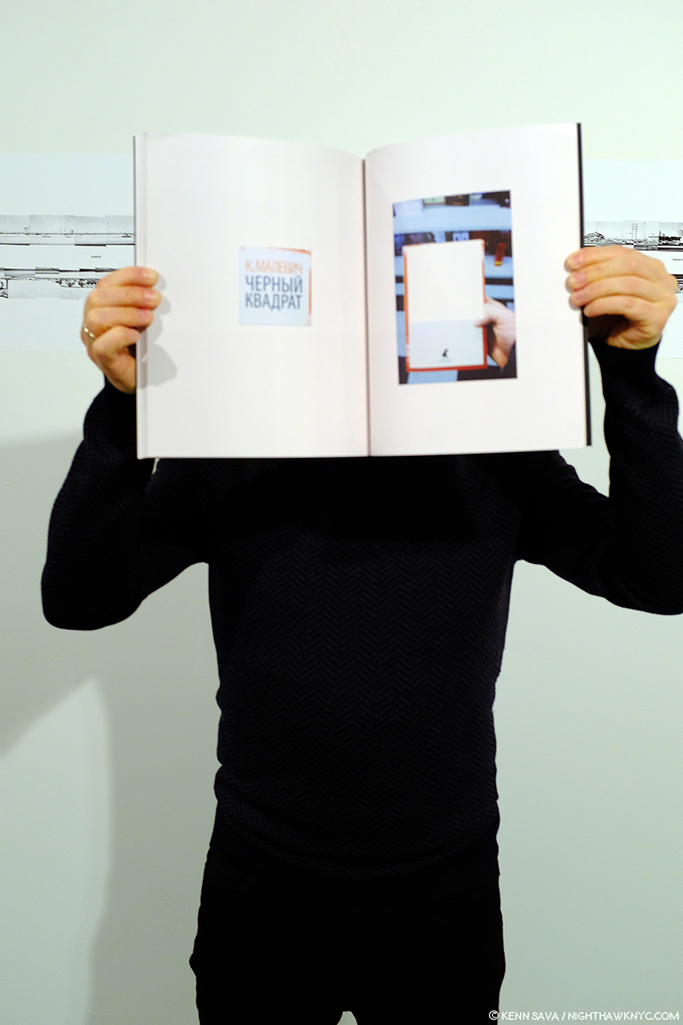
Mikhail Mishin demonstrates the influence of Malevich on his work. The first word in red on the left hand facing page happens to be “Malevich” in Russian.
Though he’s not one of the LOST II Artists, I asked Mikhail what his experience was like having his book published by Kris Graves Projects. “Producing the book with Kris was pretty seamless and pleasant experience and he has an excellent knowledge of, and insight into, the art book industry and in the art world,” he said. “I had my book dummy designed and printed before I was introduced to Kris by our mutual friend. After our initial meeting and discussion Kris was interested in producing this book and we started the process.”
“We had a few sessions after when we discussed edition, choosing the press, paper quality, the cover design and so on. All of that went very smooth as Kris already had pretty good idea where and what to do. Soon after we finalized the files and sent to press in New Hampshire which did a very nice job as you could see in the result.”
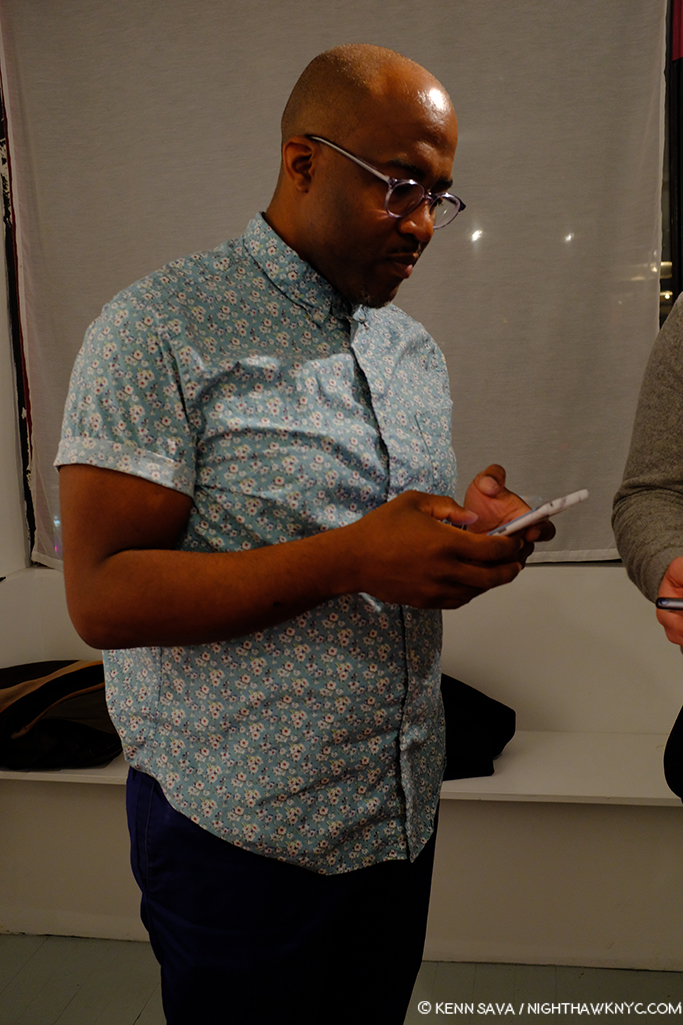
While the Isaac Diggs/Mikhail Mishin Book Release was going on, Kris Graves was also checking in on the printing of LOST II happening at that very moment(!) in Spain. February 22, 2019.
Meanwhile, back on the LOST II front, while the book release was going on, Mr. Graves was multi-tasking as ever, checking in on the progress of the printing of LOST II on his phone, which was going on in Spain at that very moment(!) …
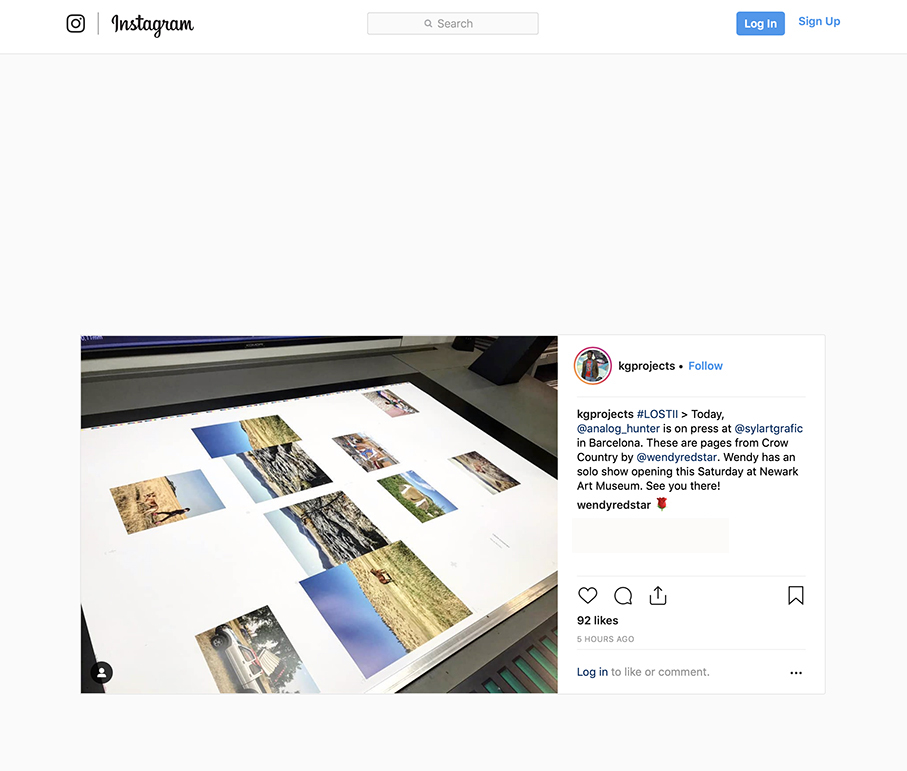
As he posted on Instagram shortly thereafter. Seen here are images from Wendy Red Star’s highly anticipated Crow Country hot off the press. Her show, A Scratch on the Earth, is now open at the Newark Museum.
where Kris Graves Projects’ Pablo Lerma was onsite in Barcelona pulling a 16 hour day overseeing the printing of ALL 20 books!
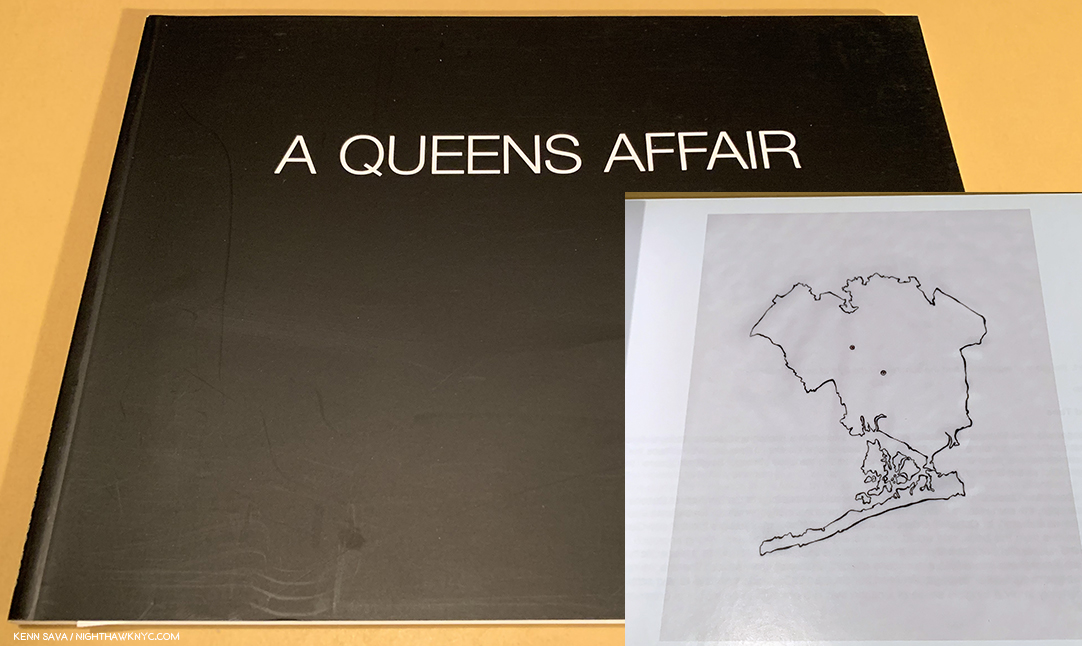
Kris Grave & Eric Hairabedian’s A Queens Affiar, 2010, Kris Graves’ first book, which includes an outline map inside.
Speaking of the bookmaking side, in thinking about the evolution of LOST and LOST II, I was struck when I recently saw a copy of Kris Graves’ first PhotoBook- A Queens Affair, 2010, in which his exterior Photos are wonderfully paired with interiors by Eric Hairabedian. The book has something of the feel of a precursor of LOST, in its unique, capsule, exploration of the borough, right down to the inclusion of an outline map, a staple of LOST & LOST II.
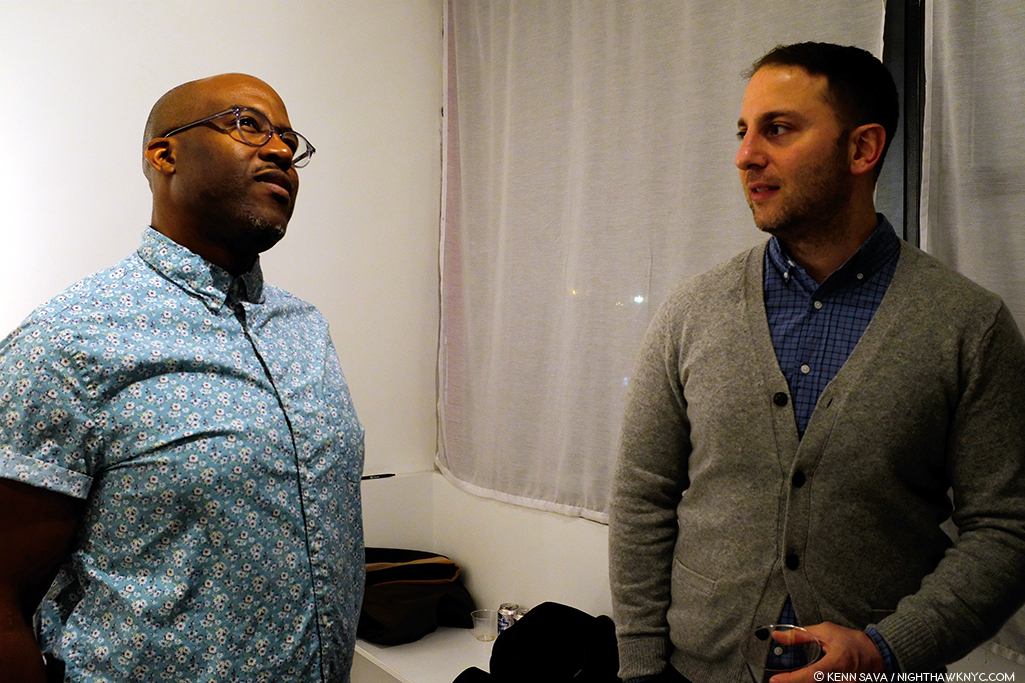
Kris Graves with Eric Hairabedian, February 22, 2019- nine years after they made A Queens Story. His relationships and his network, also, play a part in the success of +KGP and the LOST series.
In the succeeding 9 years, Kris’ publishing has come a long way. I asked him how his bookmaking has changed just between LOST and LOST II. “I produced LOST with a digital offset printer in New Jersey,” he told me. “We loved the quality, and are using those materials for other books. This time, we are working with a press in Barcelona, and making the books in offset, not digital. In addition to the slightly larger size, the books will now be able to be opened further, so book spreads will look a bit better. Since we want to make a better project every time we make a book, we also wanted to splurge on a more expensive process for LOST II. Printing of the books is now complete, the down payment is in (smiles), and the books should set sail from Barca in a week or so, just in time for their AIPAD launch.”
It’s been apparent to me this past year that one of the most remarkable thing about +KGP’s books is their high quality and quite reasonable cost. While a set of the 20 volumes of LOST II is (currently) 350.00, the individual books have a price of 28.00 each. Though his books are affordable, the quality of the work they contain has been noticed at very high levels. LOST was acquired by The Metropolitan Museum, Guggenheim Museum, Art Institute of Chicago, Museum of Fine Arts, Houston, among other esteemed institutions. I asked Kris what he was most proud of about its success. “Good question. I am proud that this group of artists works as hard as they do. That’s it. Getting into collections is gravy, maybe it means that someone will peep the series 150 years from now. That would be cool. Usually, I’m too busy to feel pride.”
Luckily, we the living won’t have to wait long to see LOST II. It debuts at The Photography Show, 2019 (AIPAD) in early April, where it will be available to the general public, accompanied by a book signing.
However if you’re a Photographer interested in getting a slot in LOST III? I learned it’s going to require a very special distinction- You have to be female.
BookMarks-
Some facts about LOST II known to me as I write-
First- Less than SIXTY complete sets, in a custom LOST II Slip case, were available when it was announced. I bought one. And no, I didn’t ask for, or get a discount. Why not? Let’s do some math. The complete set of LOST II is being released at $350.00- a quite sizable sum by any standards. Considering there’s 20 books in the set? That makes it $17.50 a book, with a free slipcase. For a first rate PhotoBook? That’s on the low end (if not at the very bottom) of the prices I see charged by ANY publisher in the world. Besides that compelling reason, I believe in supporting Artists doing great and/or important work, so they can make more of it.
Second- Regarding individual book sales, Kris told me there will be just 125 first edition/first printing copies available of each title! When you take a look through the +KGP site, you’ll notice the high percentage of recent titles marked “SOLD OUT,” so part of the reason I’m doing this piece is as a community service for my readers who have read my prior Kris Graves Posts, and/or have bought LOST, so they can get LOST II, if they wish, as well as providing some insights into how a unique series like this comes into being.
Third- LOST II is available for pre-order from Kris Graves Projects online here. In the time it’s taken to prepare this Post, I now believe no more than 30 sets are still available. ALSO! I’m pleased to mention that if you mention “Kenn Sava” when you order a set from +KGP, your order will include a signed copy of Kris Graves’ The Bronx.
Besides LOST II, also recommended are Isaac Diggs just released book, Middle Distance, and be sure to check out Mikhail Mishin’s fascinating new book, Endless Bridge, both of which were moving quickly at the book release.
Finally, a tip- I saw Mercedes Jelinek’s powerful first PhotoBook, These Americans, at AIPAD last year on the +KGP table I showed earlier. While I was busy looking at something else, the last copy was sold. After spending the last year looking for it, I’m happy to report that I just found out that a few copies are STILL AVAILABLE, here, at the Asheville Art Museum! Mine came signed. Highly recommended.
*- Soundtrack for this Post is “The National Anthem” by Radiohead (a band Kris and I both admire) from Kid A, performed here (with horns!) on Later–
My thanks to Shane Lavalette, Nelson Chan, Isaac Diggs, Mercedes Jelinek, Cristina Velasquez, Mikhail Mishin, Griselda San Martin, the Asheville Art Museum, and Kris Graves.
NighthawkNYC.com has been entirely self-funded and ad-free for over 6 years, during which over 250 full length pieces have been published. If you’ve found it worthwhile, you can donate to keep it going & ad-free below. Thank you!
Written & photographed by Kenn Sava for nighthawknyc.com unless otherwise credited.
To send comments, thoughts, feedback or propositions click here.
Click the white box on the upper right for the archives or to search them.
For “short takes” and additional pictures, follow @nighthawk_nyc on Instagram.
Subscribe to be notified of new Posts below. Your information will be used for no other purpose.


